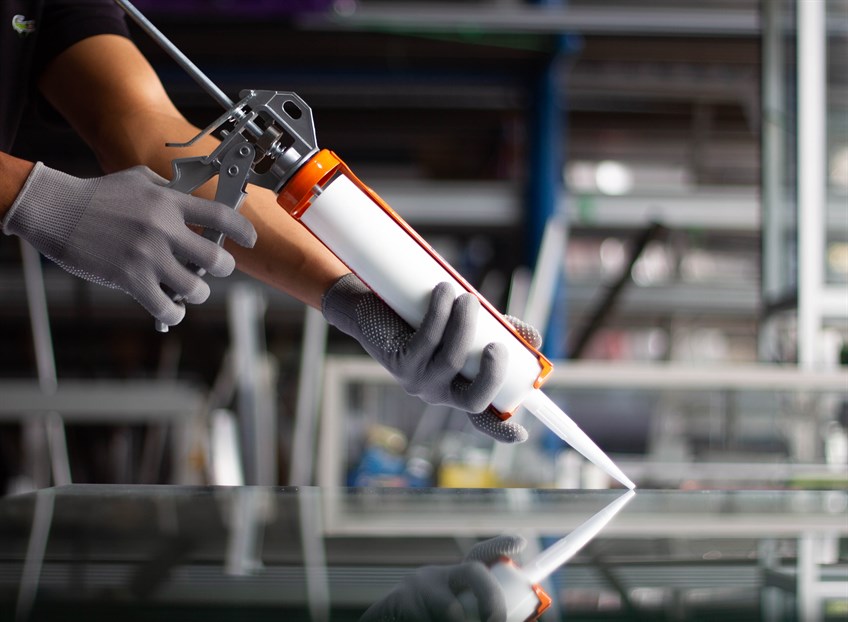All aviation lubricants strive to improve performance, reduce wear, and avoid unscheduled downtime. They do this by preventing direct metal-to-metal contact and producing a shield between surfaces.
Different types of lubricants are used for various aviation purposes, thus selecting the proper product requires a solid awareness of the options available.
Definition of Aviation Lubricants
Aviation Lubricants is a term called for lubricants used in the aerospace industry. Oil-based and Grease-based lubricants are used in both the airframe and engine of an aircraft in order to lubricate, cool and clean various parts of the aircraft. The lubrication is done by forming a layer of fluid between the movable parts, which in consequence decrease the friction and absorb any heat generated from the moving components [1].
Fields of usage of Aviation Lubricants
Aviation airframe lubricants are used to provide lubrication for movable parts within the airframe such as landing gear mechanisms, flight control mechanisms, brakes and steering mechanisms. Grease is mostly used in the airframe to provide lubrication. Another function of lubricants in the airframe is muscle lubricants, where hydraulic oils are used to power the movement of different systems such as landing gear extension/retraction, and flight control movement.
Aviation engine lubricants are created to provide additional functionalities for engine cooling, cleanliness, and corrosion inhibition in addition to lubricating engine moving parts such as bearings, gears, camshaft, rocker arms, cylinder walls, piston rings, push rods, and sockets under a wide range of operating temperatures [2].
Types of Aviation Lubricants
Lubricants used in aviation can be classified into three categories:
Oil-based aviation lubricants
Grease-based aviation lubricants
Penetrating lubricants
Oil-based aviation lubricants
Oil-based lubricants can be further classified into two categories: Lubricating Oil & Hydraulic Oil. The difference between the two is that Hydraulic oil is not only a lubricant, but it is also the way by which the power is transferred from the aircraft control devices to the aircraft movable parts. Hydraulic oil is used in different parts of the aircraft such as landing gear shock struts (where hydraulic oil is used to damp the force generated due to aircraft landing), landing gear extension/retraction, brakes, steering system, flight control and engine thrust reversers. An example is Eastman Skydrol LD4 Hydraulic Fluid.
Lubricating oil is mainly used in the engine compartment in order to cool and lubricate rotating and moving parts. The two primary types of oil used in aircraft engines are mineral oil and ashless dispersant (AD). Both kinds are produced from mineral oil, a highly refined oil made from petroleum. The reason that AD oils vary from other types is that they contain additives intended to gather engine debris and transport it securely to the aircraft's oil filter. An example is Eastman Turbo Oil 2197.
Grease-Based Aviation Lubricants
Because they are durable and long-lasting, grease-based lubricants are perfect for aircraft applications. For heavy-duty machinery, synthetic grease is frequently chosen over grease made from petroleum. Gears, bearings, axles, and other machinery that works at high temperatures, torque, and shear stress fall under this category. In the airframe, moving components like the landing gear, brakes, and carriage for high-lift devices are greased and kept clean. An example is Mobilgrease 28 Grease.
Penetrating Lubricants
Although they aren't intended for long-term usage, penetrating lubricants may be incredibly helpful for removing rust, dirt, and other impurities. These thin fluids with low viscosity penetrate tiny fissures and offer lubrication where other solutions fall short. One of the most popular penetrating lubricants, WD-40 is a staple in the global aviation industry [3].
Aviation Lubricants Specifications
The aviation sector is subject to strict regulation. In comparison to the other sectors that lubricant companies provide, the standards for aviation turbine lubricants are relatively rigid. The specs contain various requirements. They have compositional restrictions that define which chemistries can be used precisely and that all additives for aircraft turbine oils must be ashless. A lengthy list of essential physical and chemical characteristics must be met, along with minimal standards for performance, thermal stability, tribological stability, and deposition qualities.
For Hydraulic oils for example, the most significant factor in the adoption of completely different flame-resistant hydraulic fluids in contemporary commercial aircraft is their flammability. The phosphate ester chemistry evolved over the previous 60 years as large commercial airplanes proliferated, and it is today what is utilized in all large commercial jets. greater landing aircraft speeds, greater brake temperatures, and increased fire safety concerns led to its adoption. Figure 1 shows the different hydraulic oil specifications used in the aviation industry.
Figure 1 – Hydraulic Oil Specs in Aviation Industry
To be sold, airframe grease products must meet both military and OEM requirements. Military specifications include MIL-PRF-23827 and MIL-PRF-81322, and the Boeing BMS 3-33 is an example of an OEM specification.
Most aviation greases are typically made using PAO and ester-based oils with a lithium complex thickener. Additionally, various thickeners made of clay or synthetic clay are utilized. All of them have additives, and some aviation-specific greases employ solid ones like molybdenum disulfide.
Factors to consider when purchasing an Aviation Lubricant
There are numerous factors that must be kept in mind when selecting the aviation lubricant. The most important factor to keep in mind is the variation of operating temperatures. Multigrade oils are used in modern aviation engines because they can maintain a specified viscosity across a wide range of temperatures.
For instance, the capacity to function at temperatures between -10°C and 40°C is crucial for the start-up of an aircraft engine. Greater grade oils can be utilized at greater ambient and startup temperatures, but they are useless in arctic or freezing circumstances, when a synthetic multigrade would be more appropriate.
Another factor that needs to be considered is the chemical formulation and chemical stability. One of the functions of the lubricants is to clean the surfaces, and to achieve this, lubricants must resist liquid absorption and must be chemically stable with the metal/surface in contact.
Another factor to observe is the weight. As lubricants in modern aircrafts represent a non-ignorable percentage of the aircraft weight, so the lubricants must be as light as possible to conserve more fuel during the operation of the aircraft.
Safety & Environmental Considerations
Dealing with aviation lubricants must be done by personnel who passed by a special training process, as these lubricants can cause safety and health issues. Some of the lubricants (such as hydraulic oil) can have an irritating smell, which inhaling it can be harmful to the human lungs. Also, the skin can be sensitive to some types of oils, so personnel must be wearing protective equipment and taking care that these types of oils do not touch their skin, eyes or be swallowed.
Another safety recommendation is to follow the manufacturer’s manual when selecting the type and specification of lubricant that is used in each part of the aircraft and taking care of the mixability of different lubricant types and brands, as in some parts of the aircraft using non-approved specification may cause damage to equipment during aircraft operation.
Future Trends & Innovation
The evolution of lubricant technology is influenced by modifications to engine and airframe designs. Both lubricants and airplane equipment are constantly evolving. From -73°C to 200°C, turbine oils are subjected to substantially larger temperature variations. Additionally, the aviation regulatory environment is unique in its strictness and structure.
Commercial aviation's new oil technology is modeled after those used in the military, where there is more room for error. Because of how cautious and conservative the commercial aviation lubricant sector is, it sometimes takes 15 years for new products to be authorized. The first concern is safety [4].
References[1] | J. Dong, C. A. Migda and D. Carr, "Aircraft Engine Lubricants," Encyclopedia of Tribology, p. 65–70. |
[2] | H. Poitz and R. Yungk, "Aviation industry, in Handbook of Lubrication and Tribology,," Taylor & Francis, vol. 1, no. 2, 2006. |
[3] | P. Petrochemical, "What Are the Different Types of Lubricants?," 16 February 2022. [Online]. Available: https://www.petro-online.com/news/measurement-and-testing/14/breaking-news/what-are-the-different-types-of-lubricants/57258. [Accessed 21 June 2023]. |
[4] | Exxonmobil.com, "Commercial aviation lubrication," 3 June 2020. [Online]. Available: https://www.exxonmobil.com/en/aviation/knowledge-library/resources/commercial-aviation-lubrication. [Accessed 21 June 2023]. |





Comments
There are currently no comments, be the first to comment.